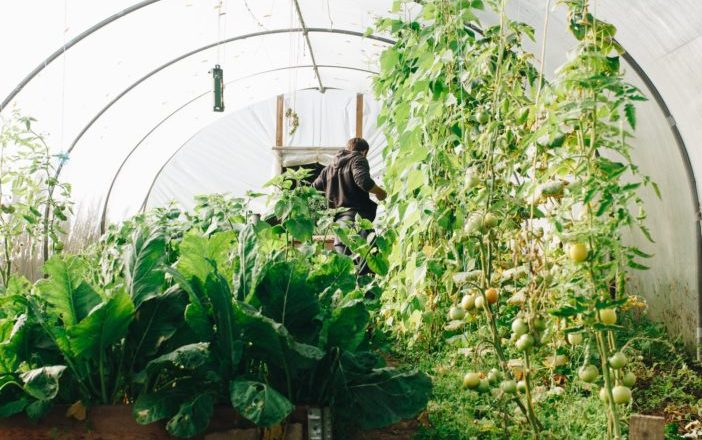Whether you’re living off-grid or in a city, access to food is one of the first concerns for a prepper. Food shortages are highly likely during a disaster (as we saw in the early days of the pandemic), and when you grow your own, that’s one less thing to worry about. You don’t have to be a master gardener to start your own survival garden; you just have to follow some simple steps.
Garden Location
The size of your survival garden depends on how much land you have. The more space available, the larger your garden, but you don’t need acres. A small yard will do. Choose a spot with full sunlight. Most plants need 6-8 hours of direct sun, and some need even more. Stay away from trees and large bushes, as these can block the light and take water and soil nutrients away from the produce. Create raised beds if you can. This allows for better drainage and less likelihood of plants rotting.
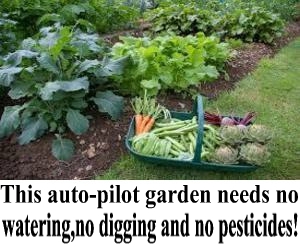
Plan your plot near a water supply. Most plants need one inch of water per week. You may want to install rain barrels with hose spouts to collect water. The best scenario is to place these near the garden.
Choose an area with good soil, if possible. Try to stay away from ground that’s too sandy or full of clay. Sandy soil lacks nutrients because it drains quickly before plants absorb what they need. Clay soil is dense and doesn’t drain well. It can be very hard, making it difficult for plant roots to grow.
You likely won’t have the perfect ground for growing, but there are steps you can take to make it better. Start by testing the soil for pH and nutrients. Mulching is one of the best ways to keep your soil healthy. Be careful not to over-till. Continuously chopping up the soil leaves it unable to move and store water and nutrients. And don’t forget to add compost. You can make this from grass clippings, leaves, coffee grounds, even vegetable scraps. As compost breaks down, it adds nutrients and microbes to the soil.
Start-up Needs
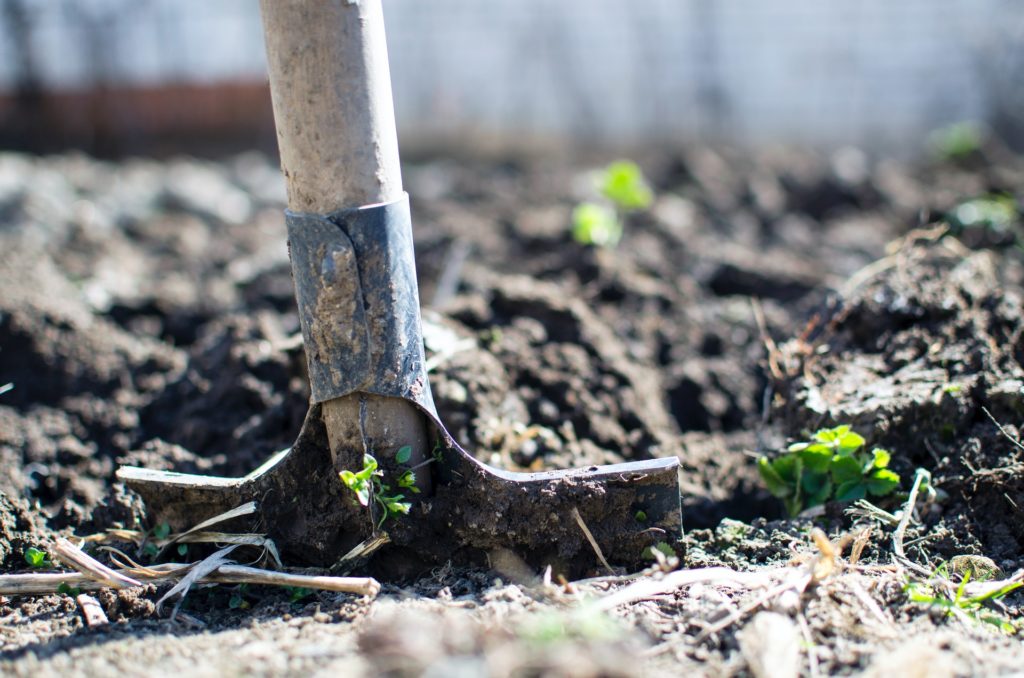
Once you’ve selected your site, you’ll need the necessary gardening supplies. If a scenario arises when you need to rely on your survival garden, you may not be able to purchase the necessities, so be sure to already have them on hand.
Tools
There are dozens of different garden tools out there. Available storage space may dictate what you buy but make sure to have the basics on hand. You’ll need digging tools, like shovels, spades, and forks, and planting tools, including trowels and bulb planters. Rakes and hoes fall under cultivating tools and are a must. They’re used to break up the soil, mix dirt and compost, and get weed roots out of the planting area. You’ll also want some watering tools like hoses, watering cans, and sprinklers. This is also where rain barrels come in. Other helpful tools but not absolutely necessary are wheelbarrows, shredders, and chainsaws.
Seeds
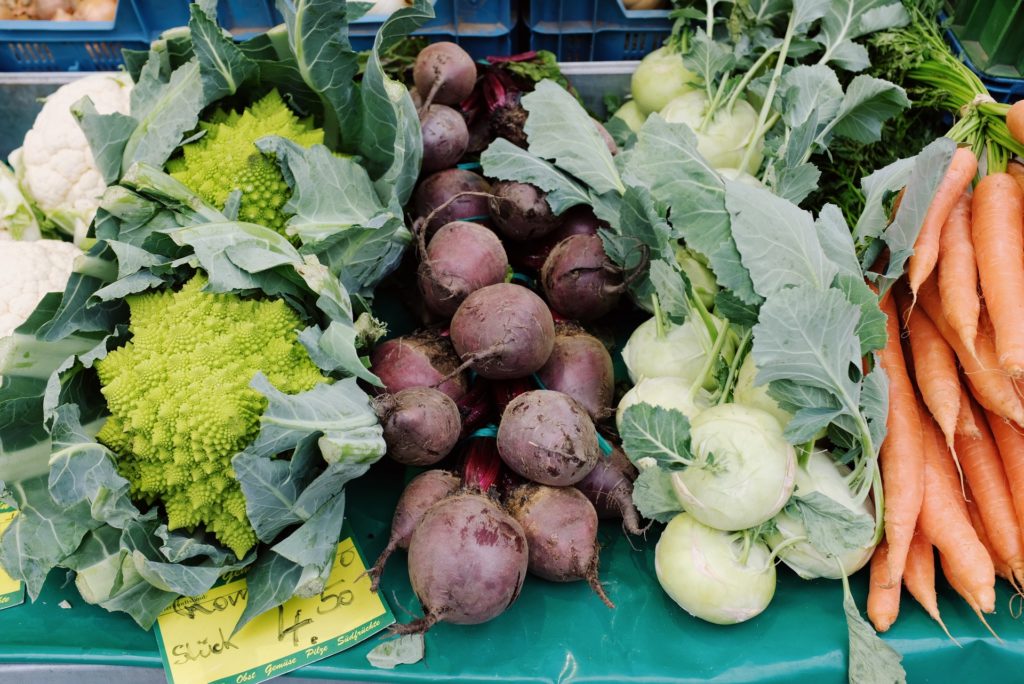
The very best crops for a survival garden are those that reseed themselves. Leafy greens like lettuce and spinach will spread their seeds as they grow, or you can catch the seeds and replant them yourself. Roots and tubers, including potatoes, regrow themselves. Leave some of the roots in the ground when you harvest or take a potato that has grown eyes and plant it.
Not all seeds from your harvest will grow new plants. For these crops, you’ll need to have seed packets on hand. Look for seeds labeled ‘open-pollinated.’ This means they are already pollinated and will produce plants similar to the parent plant. Seeds with the heirloom label are also a good pick. They are open-pollinated and have been specifically reproduced for decades. Be sure to store seeds in a cool, dry location. If you plan on keeping them indefinitely, consider freezing them.
Best Produce To Grow in your Survival Garden
Several things come into play when choosing the plants for your survival garden.
- How many people will you feed? Plants that produce the most food are best for large families.
- Which plants offer the best nutrients, vitamins, and proteins? If you expect to survive off this garden, you need food that keeps you healthy.
- How hardy is the plant? Fruits and vegetables that are delicate and require extra attention aren’t ideal for survival gardens.
- Which plants thrive in your environment? Be aware of your gardening zone. Just because something grows well somewhere else doesn’t mean it will flourish in your area.
Some plants grow just about anywhere, so we’ll focus on those.
Starchy Vegetables
We need a certain amount of calories each day to stay alive. That’s where starchy and sugary plants come into play. These will likely make up the majority of your food each day. The best starchy vegetables are those that grow underground. Potatoes, yams, sweet potatoes, butternut, and acorn squash are the most common, and potatoes grow year-round. That’s especially helpful if you have a large number of people to feed. These crops are also high in fiber and low in saturated fat. Another bonus is that most kids love potatoes!

Non-Starchy Vegetables
These veggies provide vitamins and minerals and are high in fiber. You need them in your survival garden for their nutrients, but they aren’t as filling as starchy vegetables because they’re low-calorie. Good choices include asparagus, green beans, carrots, broccoli, cauliflower, tomatoes, and celery.
Leafy Vegetables
Depending on your gardening zone, some leafy vegetables will flourish, while others will wilt. Some of the best plants for cooler climates are also some of the easiest to grow. Collards are durable plants withstanding temperatures as low as zero degrees Fahrenheit. In fact, a little frost makes the leaves sweeter. Kale is similar to collards, standing up to below freezing temperatures, with its taste benefitting from a frost. Spinach also does well in those conditions, but you may want to cover the rows to keep the leaves in good shape.
In warmer (even hot) climates, Jericho romaine lettuce is bred for high temperatures and doesn’t go bitter. Speckled Bibb lettuce tastes great and lasts longer in the heat than some other lettuce varieties.
Beans & Legumes
When it comes to existing solely off a survival garden, meat may be scarce. You’ll need beans and legumes to replace that protein. They’re also full of fiber and B vitamins, can reduce cholesterol, and increase healthy gut bacteria. Legumes are generally low-maintenance and easy to grow. Peanuts, peas, soybeans, and chickpeas fall into this category. These are high-nutrition plants that are easy to harvest and a must for your survival garden.
Fruit
Veggies will make up the majority of your survival garden, but preppers don’t have to go without fruit. Grapes, strawberries, and blueberries thrive in most climates, although blueberries don’t do well in the desert.
Blackberries are an excellent choice. One bush will take a year or two to produce fruit, but then the bushes will multiply, giving you a steady supply of fruit for the table, jams, and syrups.
There are dwarf varieties of apple and pear trees if your garden is compact. Melons are also a great choice because the seeds are easy to save and plant during the next growing season.
How To Tend Your Survival Garden
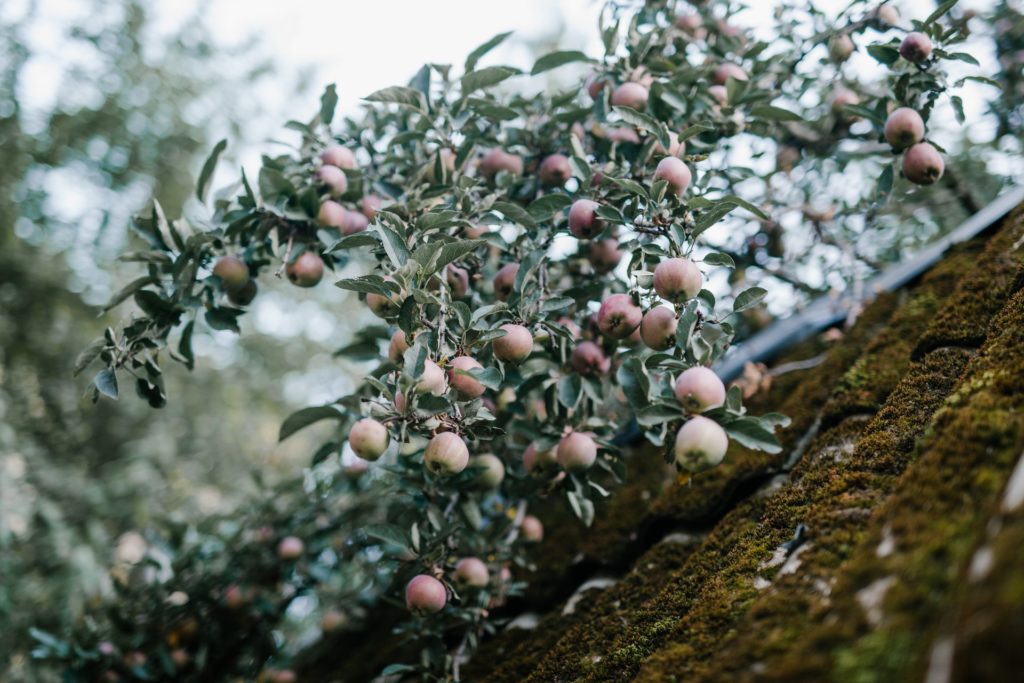
Once your soil is ready, and your seeds are planted, there’s still work to do. You don’t have to work in the garden every day but a minimum of three times a week is recommended. Plants need sun, water, and nutrients. You’ve, hopefully, already planted your garden in a sunny space. As far as water, about an inch per week is what most plants require. Check the soil moisture at least twice weekly and water when the top inch of soil starts to dry out.
Keep a close eye on weeds and remove them as soon as they spring up. Weeds steal moisture and nutrients from your crops and also provide a place for pests and disease to flourish, and could spread to healthy plants. Be sure to get rid of weeds, roots and all, before they flower. They’ll be less likely to spread.
Pruning is another important step in tending your survival garden. Trim your plants to remove unhealthy leaves or thin them to allow more sunlight to reach the base of the crop. Pruning can ward off pest infestations and promote healthy growth.
Harvest and Enjoy!
Once you’ve done everything right, you’ll harvest your crops at peak quality. This means waiting for the proper maturity. Root crops (carrots, beets, turnips) can be pulled when they reach a usable size. Carrots can be left in the ground indefinitely (except after the ground freezes) but beets and turnips turn woody if they get too large.
For peas and beans, check the size and feel of the pod. You can judge the size by feel but go ahead and shell a few to make sure they’re mature.
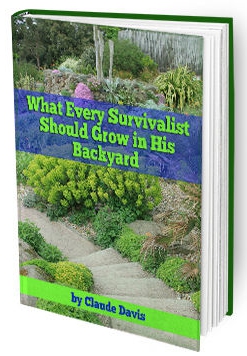
Fruiting vegetables (peppers, tomatoes, cucumbers) can be judged by skin color. Look for an even color over the entire fruit. You can also go by size but be aware, bigger doesn’t always mean better. Zucchini tastes best when it hits about four inches.
Following these steps helps ensure you will have a bounty to provide for your family if disaster strikes. But it’s better not to wait. Crops need time to grow and mature. You need time to perfect your gardening skills. Preppers should strongly consider starting a survival garden now.
source : Guest Contributor

